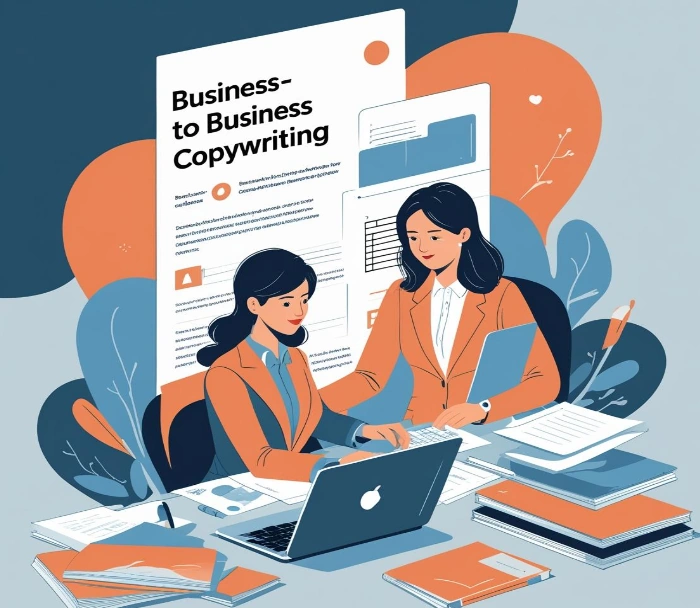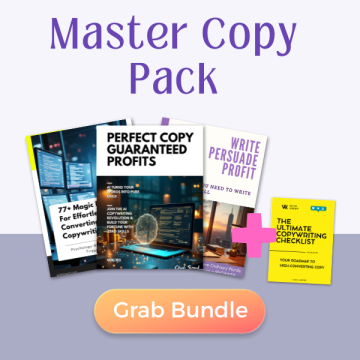Hey there, future copy champion!
Tired of reading B2B copy that puts you to sleep? You’re not alone. Most business writing sounds like it was written by robots for robots. But here’s the thing—some companies are absolutely crushing it with their b2b copywriting examples, and I’m about to show you exactly what they’re doing right.
I’ve spent the last decade crafting copy that converts for everything from SaaS startups to Fortune 500 companies. And honestly? The best campaigns always break the “boring B2B” rule. They speak human, solve real problems, and make decision-makers actually want to read more.
Ready to steal their secrets? Let’s dive in.
Why Most B2B Copy Falls Flat (And What Winners Do Instead)
Here’s a confession: I used to write terrible B2B copy.
My first campaign started with “We leverage synergistic solutions…” Yikes. The response rate? A whopping 0.3%. That painful lesson taught me something crucial—business people are still people. They don’t want corporate speak. They want clear answers to their problems.
The companies crushing it with B2B copywriting understand three core principles:
- They write for humans, not job titles
- They focus on outcomes, not features
- They use simple language that anyone can understand
Think about it. When you’re scrolling LinkedIn at 2 PM, do you want to read about “integrated B2B solutions that optimize your workflow infrastructure”? Or would you rather see “Cut meeting time in half with this simple tool”?
The answer’s obvious, right?
You might like:
- PAS Copywriting Examples That Tripled My Conversion Rate
- AIDA Copywriting Examples: Real Templates That Made Millions
- 15 Freelance Copywriting Examples That’ll Land You More Clients
Email Marketing Examples That Actually Get Opened
Email remains the backbone of B2B marketing. But most campaigns get deleted faster than you can say “unsubscribe.” Let’s look at what separates winners from losers.
The Cold Outreach That Converts
Subject: Quick question about [Company Name]’s Q4 goals
Hey Sarah,
Noticed you just expanded into the European market—congrats! That’s huge.
Quick question: Are you dealing with the nightmare of managing customer support across different time zones? We just helped TechCorp reduce their response time by 60% without hiring anyone new.
Worth a 5-minute chat?
Best, Mike
Why this works: It’s personal, specific, and leads with value. No corporate jargon. Just one person talking to another.
The Follow-Up That Doesn’t Annoy
Most follow-ups feel pushy. This one doesn’t:
Sarah,
I know you’re swamped (who isn’t these days?). If the timing isn’t right for that chat, no worries at all.
Just wanted to share this quick case study about how we helped a company similar to yours save 40 hours per week on customer support. Figured it might be useful whether we work together or not.
[Link to value-driven case study]
Cheers, Mike
The magic? It gives value without expecting anything back. That’s how you build trust.
Website Copy That Converts Visitors to Leads
Your homepage has about 8 seconds to capture attention. Most B2B sites waste those precious seconds on mission statements nobody cares about.
Headlines That Hook Immediately
Bad: “Industry-Leading Solutions for Modern Enterprises” Good: “Stop Losing Deals to Slow Proposal Turnaround”
Bad: “Innovative CRM Technology” Good: “Close 30% More Deals With Less Follow-Up”
See the difference? The good examples focus on specific outcomes your prospects actually want.
Value Propositions That Stick
Here’s a formula that works every time:
We help [target audience] achieve [desired outcome] without [common pain point]
Examples:
- “We help SaaS founders close enterprise deals without hiring expensive sales teams”
- “We help marketing directors prove ROI without drowning in spreadsheets”
- “We help HR leaders reduce turnover without breaking the budget”
This format works because it immediately answers three questions: Who is this for? What will I get? What pain will it eliminate?
Social Media B2B Copy That Builds Authority
LinkedIn isn’t just for job hunting anymore. It’s where deals get made and relationships get built. But most B2B social content feels like watching paint dry.
LinkedIn Posts That Generate Leads
The Problem-Solution Post: “Spent 3 hours yesterday explaining to a client why their email open rates dropped 40%.
The culprit? iOS 15 privacy updates.
Here’s the 5-minute fix that saved their campaign: [Insert valuable tip]
What other “mysterious” marketing problems are you dealing with?”
This format works because it tells a story, provides value, and invites engagement.
The Behind-the-Scenes Winner
“Mistake that cost us $50K in our first year:
We built our product before talking to customers.
Spent 8 months perfecting features nobody wanted. Ouch.
Now we do this instead: • Survey 50 prospects before writing a single line of code • Build a waitlist before building the product
• Launch with 3 core features, not 30
Simple? Yes. Easy? Not so much.”
People love authentic stories about failure and recovery. It builds trust faster than any “we’re amazing” post ever could.
Sales Page Copy That Closes Deals
B2B sales pages face a unique challenge. You’re often selling to committees, not individuals. Your copy needs to convince multiple stakeholders with different priorities.
Structure That Converts
1. Hook with a specific problem “If you’re manually tracking leads in spreadsheets, you’re losing 30% of potential revenue.”
2. Agitate the pain “Every day you wait, competitors with better systems are stealing your best prospects. Your sales team is frustrated. Your CEO is asking tough questions about pipeline performance.”
3. Present the solution “LeadFlow automates your entire sales process from first contact to closed deal.”
4. Prove it works “TechStartup increased their close rate from 12% to 31% in just 90 days.”
5. Handle objections “‘But we’re too small for sales automation.’ Actually, our smallest client has just 3 salespeople and they’re our biggest success story.”
6. Create urgency “We’re only onboarding 10 new clients this quarter to ensure white-glove service.”
This structure works because it follows the natural decision-making process of B2B buyers.
Video Script Examples That Engage and Convert
Video is exploding in B2B marketing. But most companies create boring talking-head videos that nobody watches past the first 10 seconds.
The Demo Video That Sells
Opening (first 10 seconds): “If managing your team feels like herding cats, this video will change everything.”
Problem identification (10-30 seconds): “You’re using 6 different tools. Slack for communication. Asana for projects. Google Docs for files. It’s chaos.”
Solution demonstration (30-90 seconds): “Watch what happens when everything lives in one place…” [Show actual product in action, not just screenshots]
Social proof (90-120 seconds): “Company X went from 40-hour weeks to 32-hour weeks using this exact system.”
Call to action (final 10 seconds): “Ready to stop the chaos? Start your free trial below.”
The key? Show, don’t tell. And keep it under 2 minutes.
Ad Copy That Stops the Scroll
Paid advertising in B2B requires surgical precision. You’re targeting busy professionals who see hundreds of ads daily. Your copy needs to cut through the noise immediately.
LinkedIn Ad Copy That Works
Headline: “Finally, a CRM that doesn’t suck”
Body: “Built by salespeople who got fed up with overly complex systems. Simple setup. Intuitive interface. Actually helps you close deals faster. Try it free for 30 days.”
CTA: “Start Free Trial”
Why it works: It acknowledges a common frustration, promises a better way, and removes risk with a free trial.
Google Ads That Convert
Headline: “Close More B2B Deals | Free 14-Day Trial”
Description: “Stop losing prospects to slow follow-up. Our CRM automates your entire sales process. Setup takes 5 minutes. Used by 10,000+ sales teams.”
The formula: Benefit + Social proof + Low barrier to entry = More clicks and conversions.
Case Study Copy That Builds Credibility
Case studies are your secret weapon for overcoming skepticism. But most read like boring reports. The best ones tell compelling stories that prospects can see themselves in.
The Story Structure That Sells
The Setup: “MidSize Marketing was struggling with a problem every agency knows too well: client reporting consumed 20 hours per week.”
The Challenge: “Their team was spending more time creating reports than actually improving campaigns. Clients were frustrated with delayed insights. The agency was burning out.”
The Solution: “They implemented our automated reporting system in just two days.”
The Results: “Within 30 days: • Reporting time dropped from 20 hours to 2 hours per week • Client satisfaction scores increased by 40%
• The team could focus on strategy instead of spreadsheets • Monthly revenue increased by $50K due to capacity for more clients”
The Quote: “This tool gave us our weekends back. And our clients are happier than ever.” – Sarah Johnson, Founder
This structure works because it follows a complete narrative arc with specific, measurable outcomes.
FAQ: Your B2B Copywriting Questions Answered
Q: How long should B2B copy be? A: As long as necessary, as short as possible. Email subject lines should be under 50 characters. Cold emails should be under 150 words. Sales pages can be longer if the purchase decision is complex and expensive.
Q: Should B2B copy be formal or casual? A: Lean casual, but match your audience. Fintech executives might prefer slightly more formal language than startup founders. When in doubt, test both approaches.
Q: How do I write for buying committees? A: Address different stakeholder concerns in different sections. Include technical details for IT, ROI calculations for finance, and ease-of-use benefits for end users.
Q: What’s the biggest B2B copywriting mistake? A: Leading with features instead of benefits. Nobody cares about your “advanced algorithms.” They care about saving time, making more money, or reducing risk.
Q: How do I make boring B2B products interesting? A: Focus on the transformation, not the tool. Don’t sell accounting software—sell “stress-free tax season.” Don’t sell project management—sell “teams that actually hit deadlines.”
Q: Should I use industry jargon? A: Sparingly. Use enough to prove you understand their world, but not so much that you sound like a robot. Your goal is clarity, not complexity.
Your Next Steps to B2B Copywriting Success
You’ve seen the b2b copywriting examples that work. You understand the principles behind them. Now comes the hard part: actually implementing what you’ve learned.
Here’s my advice after years in the trenches: Start small. Pick one format—maybe cold emails or LinkedIn posts. Write 10 pieces using the frameworks I’ve shared. Track what works. Double down on winners.
Don’t try to perfect everything at once. The best copywriters I know got there through iteration, not inspiration. They wrote, tested, learned, and improved. That’s your path too.
Remember, B2B doesn’t have to mean boring. The companies winning today treat their prospects like real humans with real problems. They use simple language, tell compelling stories, and always—always—lead with value.
Your prospects are drowning in corporate speak. Be the voice that cuts through the noise. Be the copywriter who actually helps instead of just sells.
Now stop reading and start writing. Your breakthrough campaign is one draft away.

